Adventure Science Center first opened its doors on October 31, 1945, as The Children's Museum of Nashville. Located on 2nd Avenue South in the old University of Nashville building downtown, World War II was coming to an end and the nation was beginning to look toward the future. Sgt. John Ripley Forbes had a vision that Nashville’s future should focus on children. His enthusiasm for a children’s museum sparked some of the city’s most prominent and influential citizens to get involved, including the museum’s first president, Vernon Sharp, Jr.
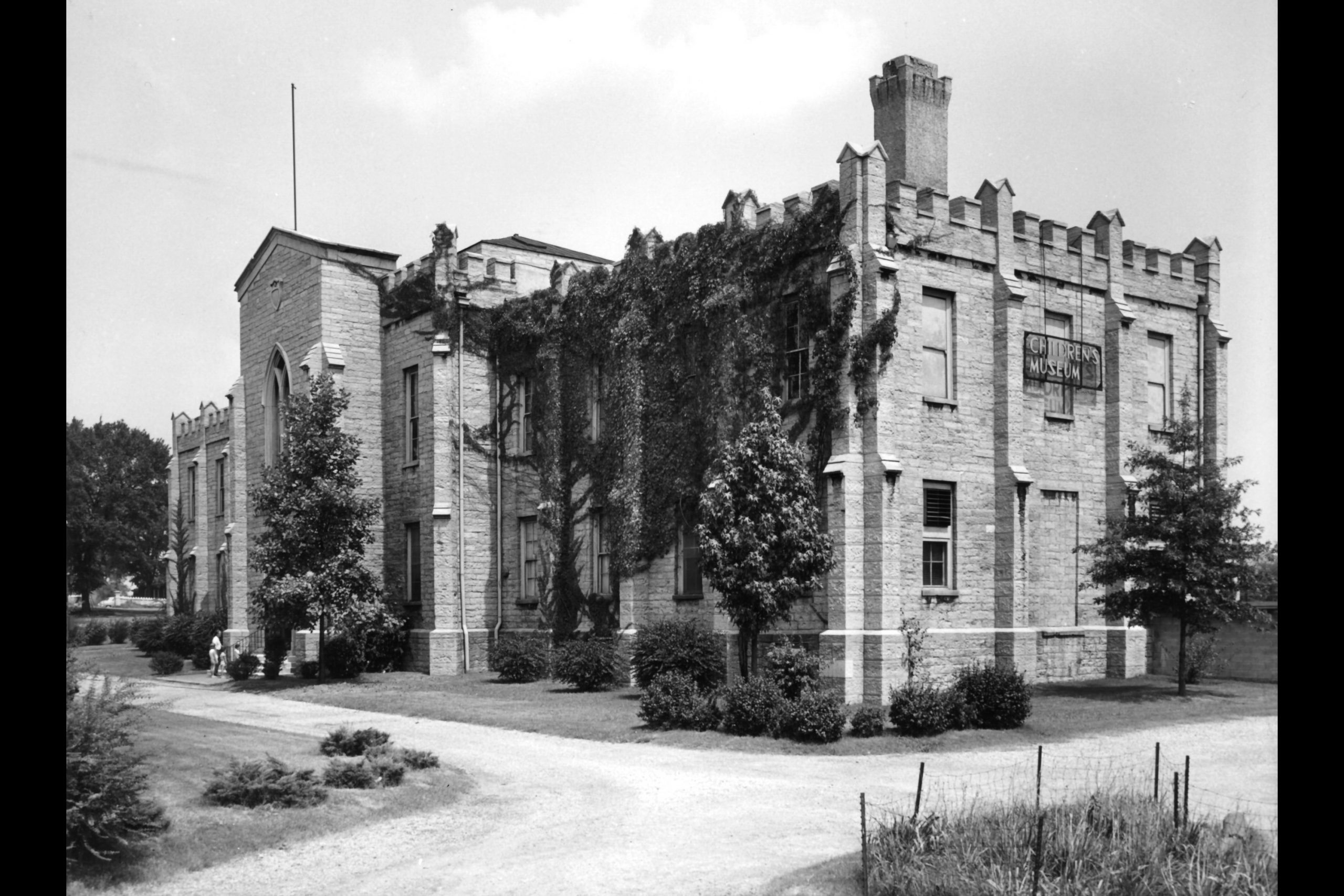
The Children’s Museum of Nashville circa 1948.
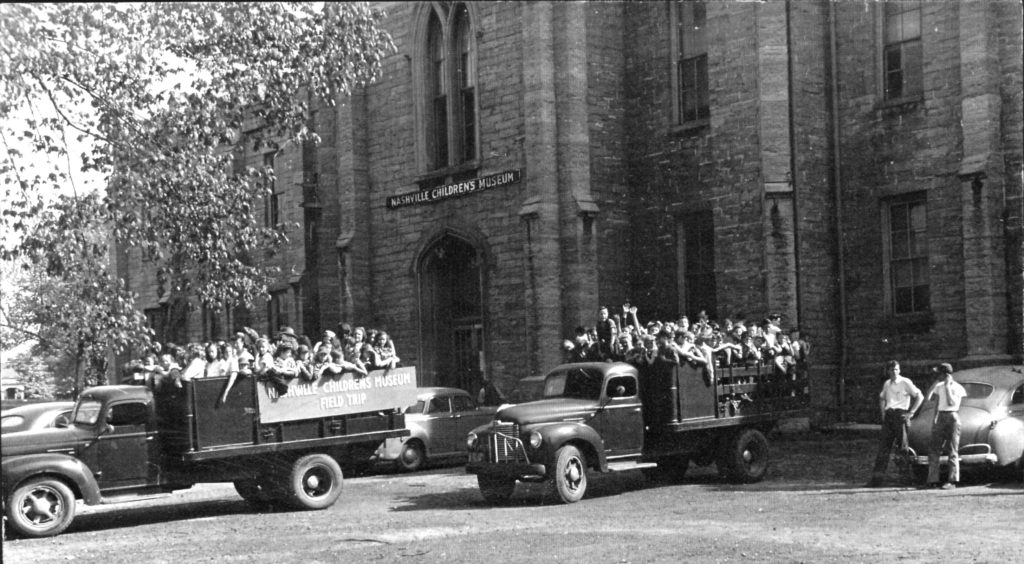
Students arrive to the Museum by the truck-full circa 1950.
As a founding trustee of the Children’s Museum of Nashville, Anthony “Tony” Sudekum shared the museum’s mission to inspire children to learn and explore the world around them. After his death in 1946, his widow, Mrs. Nettie Elizabeth Sudekum, gave the museum $5,000 in his memory to build a dome and install a Spitz star projector. At that time, it was the only planetarium in Tennessee and one of only three in the South.
On March 3, 1952, a ceremony was held to dedicate the Sudekum Planetarium where Armand Spitz, the inventor of the projector, was the guest of honor alongside members of the Sudekum family.
By the 1960s, the museum was quickly outgrowing the old building on 2nd Avenue South and more space was needed. In January 1966, Mrs. Albert Menefee Jr., one of the directors of the Justin and Valere Potter Foundation, announced a donation for a new building. Museum trustees were already negotiating with the Metro Parks Board of Commissioners to set aside part of Fort Negley Park as the site of the new museum building.
On Sept. 15, 1971, Jesse E. Wills, president of the museum, announced construction would soon begin.
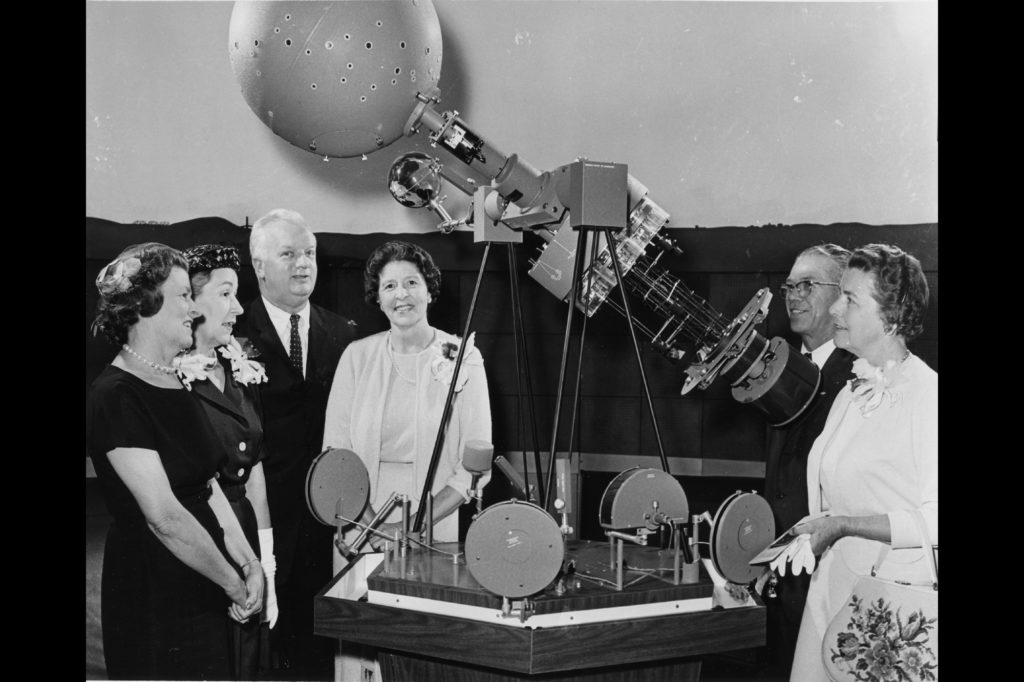
The Sudekum family admires the Spitz star projector.
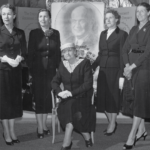
Mrs. Sudekum sits surrounded by her daughters.
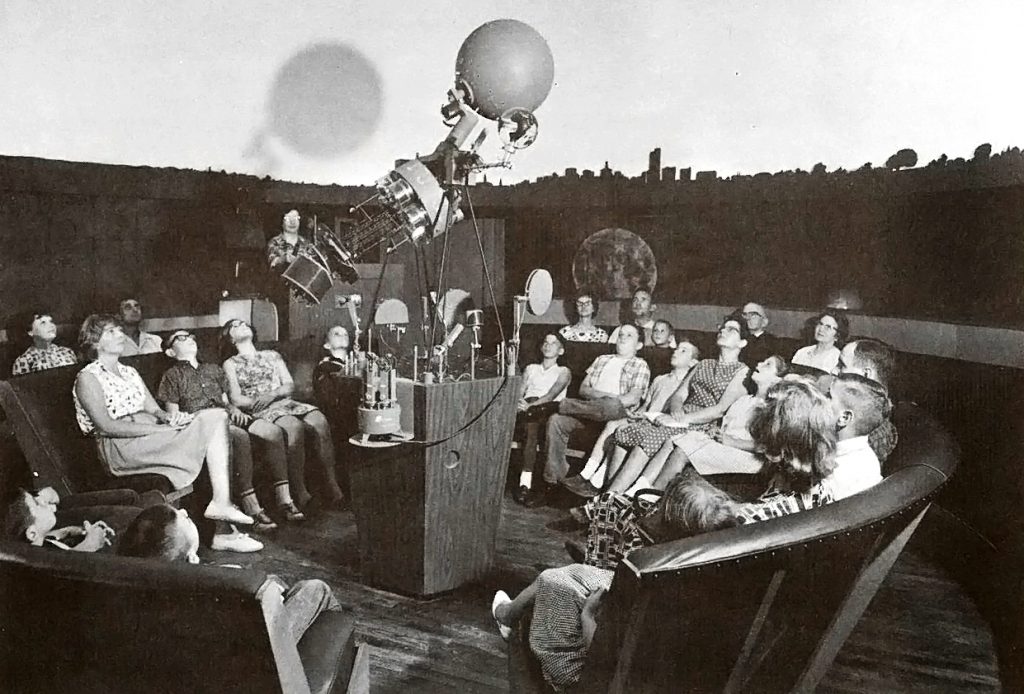
The planetarium could only hold about 80 people when it first opened.
In the fall of 1972, the trustees voted to change the name of the museum to Cumberland Museum and Science Center. This name change was made in recognition of the increasing number of adults engaged in programs including lectures, movies, field trips and clubs. The new location, which opened in 1974, saw attendance numbers jump greatly.
In the early 1980s, the museum’s Sudekum Planetarium brought a new show to Nashville – LASERVISION. Using a new, four-color laser projection system, the planetarium created spectacular laser shows that entranced audiences (and still do to this day). The museum also opened its first computer lab in 1983, providing public access to this burgeoning technology. Throughout the years, the Sudekum family continued their strong support of the museum. The four daughters – Viola Sudekum Baulch, Elizabeth Sudekum Johnston, Marie Sudekum Woolwine and Sara Sudekum Stengel – established the Sudekum Memorial Trust in 1984 to honor their parents and support the planetarium’s mission of education and outreach.
In 1985, sisters Margaret and Elise Croft bequeathed their property, located 5 miles away, to the museum to be developed into a wildlife park. The Grassmere Wildlife Park opened in the summer of 1990. The museum eventually divested its ownership, and after several years it became the Nashville Zoo at Grassmere. To this day, the Croft House still sits on the Zoo’s property and is now a museum.
Because of growing popularity, the museum announced a 16,000-square-foot expansion in 1986. This new growth also brought new education initiatives, including the start of mobile outreach programming in 1988. One of the popular programs introduced in 1990 was StarLab, a portable planetarium system that seated about 25 people under an inflatable dome. StarLab brought the stars and constellations to life for students throughout Middle Tennessee. These efforts were recognized in 1993 when the Tennessee Department of Education provided a sizable grant to the museum for expanded K-12 science enrichment programming.
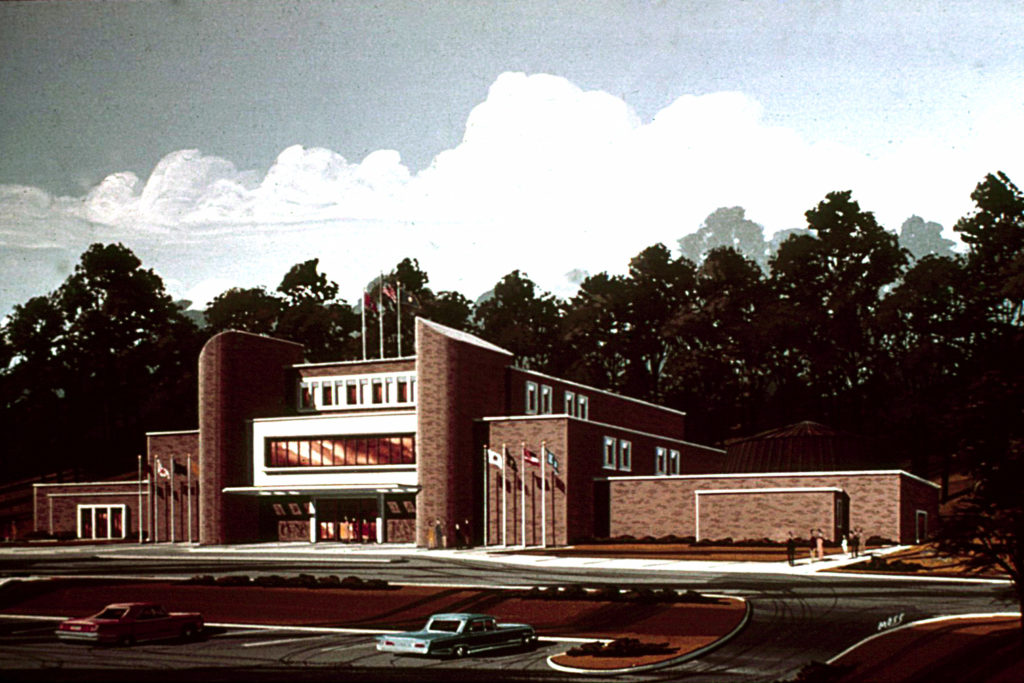
The Cumberland Museum and Science Center opens in Fort Negley Park in 1974.
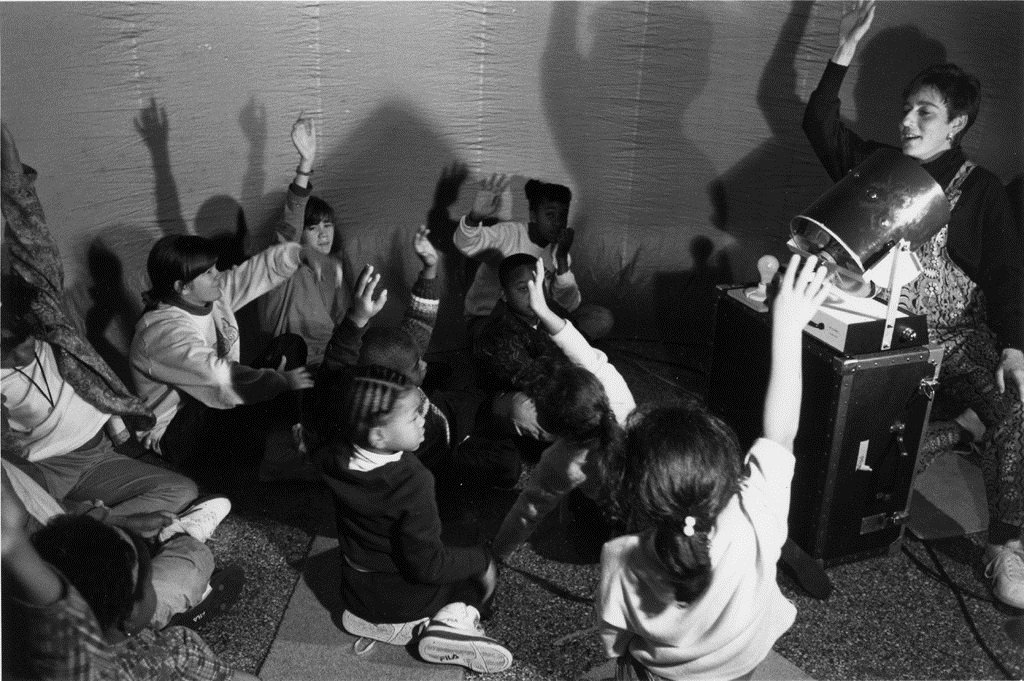
Students learn about the stars in StarLab, an inflatable portable planetarium system.
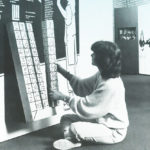
An exhibit in the early 1990s explored what computers of the future might look like.
The 2000s brought a few big additions to the museum, the first of which was the Adventure Tower in 2002. The tower is a one-of-a-kind, 75-foot tower that demonstrates the most progressive example of hands-on education, launching a new era of igniting curiosity. Shortly after the Adventure Tower exhibit opened, another name change came for the museum in 2003: Adventure Science Center.
The Adventure Tower wasn’t the only major change in the new millennium. On May 30, 2005, the BodyQuest exhibit opened to the public with 9,000-square-feet of interactive exhibits that allow visitors to experience all the major body systems through larger-than-life components accompanied by engaging science activities.
When the last Sudekum daughter passed away in 2002, the Sudekum families gifted her estate of $1.7 million to the museum to spark the development of a new planetarium and what would become Space Chase, a new exhibit wing dedicated to Earth and space sciences.
After six years of planning, the new Sudekum Planetarium and Space Chase exhibit gallery opened to the public on June 28, 2008. Sudekum Planetarium was among the best in the country – with a seating capacity of 166 and a 63-foot dome featuring digital projection and stereo surround sound – as well as the first GOTO Chiron Hybrid star projection system in the United States. While visitors got close to 6.5 million stars under the dome in the planetarium’s Judith Payne Turner Theatre, Space Chase provided an opportunity for visitors to learn more about their celestial neighborhood.
Today, with the continued support of our members and generous donors, we will inspire the next generation of scientists, engineers, doctors, explorers, and innovators that will transform the world.
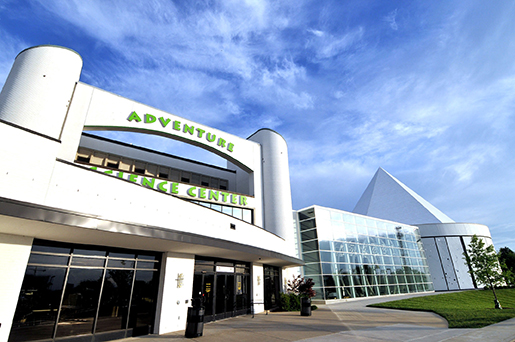
In 2008, the Space Chase exhibit gallery and the new Sudekum Planetarium opened to the public.
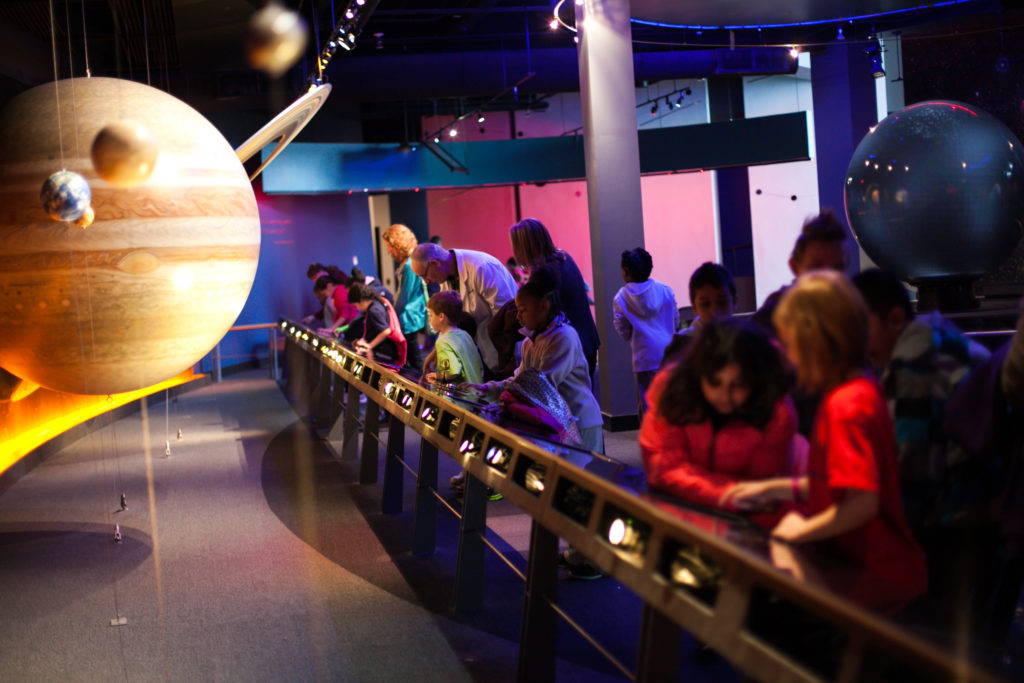
The Solar System Survey gallery in Space Chase puts the entire solar system at one’s fingertips.
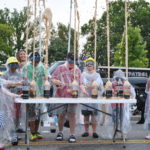
Educational programming, including camps, school and outreach programs, aim to ignite curiosity in students and learners of all ages.

